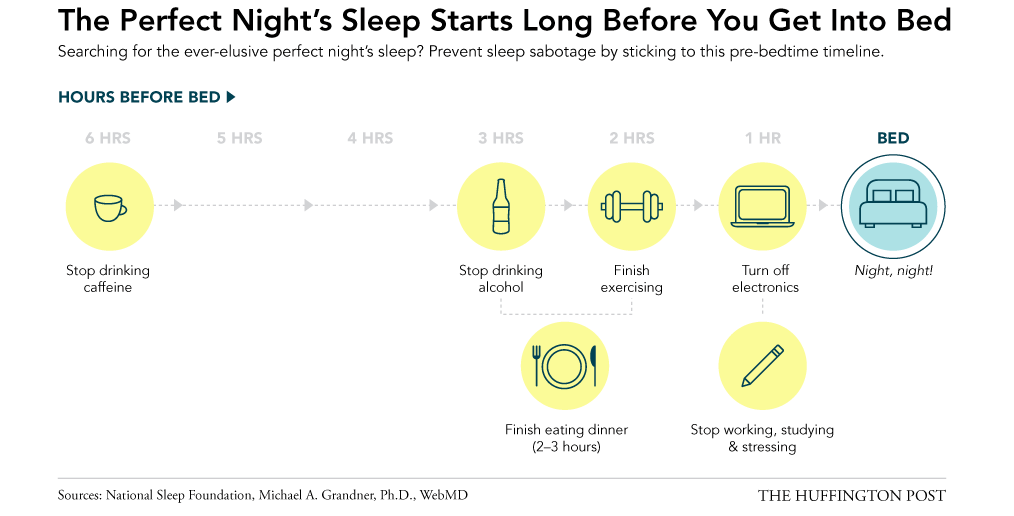Unless you’ve been living under a digital rock, you’ve likely seen the many recent articles about the importance of sleep. Arianna Huffington has made it her personal mission to ensure we all get a good night’s sleep, entreating women in the business world to (literally) sleep their way to the top. Study after study shows the consequences of sleep deprivation, ranging from cancer and diabetes to a serious case of the munchies. As a society, we all need more sleep.
So what’s getting in the way?
As a pediatric sleep consultant, I spend my time helping children go to bed more peacefully. Kids are busy from sun-up to sundown: playing, eating, playing some more. At night, their bodies are tired but their minds are wired. Enter the bedtime routine: A series of events (bath, cuddles, books, songs, etc.) designed to help them wind down and prepare for lights out. A solid bedtime routine is key to getting good sleep.
I’ve noticed, however, that the same parents who devote time to helping their kids wind down don’t do the same for themselves. Too often, we parents stagger to our own beds and belly-flop into a fitful sleep. No wonder we don’t feel rested in the mornings!
Adults need and deserve a bedtime routine. Like kids, we spend most days with our minds churning and our bodies moving. Taking the time to wind down and calm our minds before bed leads to more restorative sleep so we wake up refreshed. Who doesn’t want that?
First, let’s face an inescapable reality: Our bodies are biologically wired to sleep and wake at the same times every day—including the weekends. It’s essential to establish a consistent wake and sleep time. Set a realistic bedtime that leaves you enough time to wind down beforehand and try to stick to it. When you do stay up later, remind yourself that it’s an exception to the rule. Do the same for your wake time: Keep it around the same time each morning. (If you have a kid who wakes up at the same time every day, congratulations! You have an adorable human alarm clock.)
Once you have a consistent sleep schedule, it’s time to create an effective bedtime routine. Again, our goals are to wind down and clear our minds so we feel more rested after a night of sleep.
- Avoid caffeine, strenuous exercise, alcohol and heavy meals in the hours before bedtime. (Click on the chart here for more guidance.)
- Set an alarm one hour before your established bedtime as a reminder that it’s time to start winding down. Turn off all electronics. The blue light they emit is the enemy of sleep. If you absolutely must use your e-reader, set it on the nighttime setting (white text against a black background).
- Choose a calming activity. Gentle stretching or yoga, a hot bath, a book, chatting with your partner. If you’re feeling particularly creative, try an adult coloring book like this or this. Mix it up: You don’t have to do the same calming activity every night, the key is to consciously try to wind down your body and mind.
- Fifteen minutes before your bedtime, get into bed. If, like me, your head is still churning with to-do items or worries, jot them down on a piece of paper. If you wake up in the middle of the night feeling anxious or worried, repeat.
- Be sure that your bedroom is dark, cool and quiet. While we sleep, our bodies revert back to our prehistoric selves, so make your room as cave-like as possible: Use blackout shades, white noise, ear plugs, eye masks, etc.
- At your bedtime, lights out! No, really. Lights out.
- If you find yourself unable to fall asleep, I find guided imagery to be very effective. There are a variety of helpful apps like mySleepButton. The low-tech version: Think of random objects and picture them in your mind. For example, sheep, apple, screwdriver, baby… whatever floats your boat. This is also helpful in the middle of the night if you find yourself unable to go back to sleep. (My husband is a big devotee of this method. I sometimes wake up in the middle of the night to hear his app listing random items).
Try your bedtime routine for at least a week. See if you’re finding it easier to fall asleep, stay asleep, and if you’re waking up more energized. For nights when you have less time, create a quick and dirty 30-minute version. At the very least, be in bed 15 minutes before your bedtime—it’ll make you more likely to stick to lights-out time.
Are you getting enough sleep? Do you have a sleep routine in place already? Tell us about it!





1 Comment
Pingback: Links In: May 27, 2016